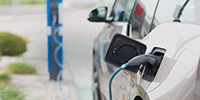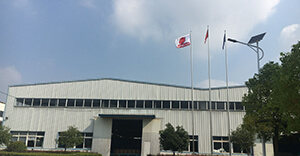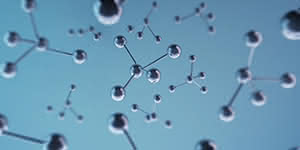We will accelerate development of lead carbon batteries
We will accelerate development of lead carbon batteriesIn Shanxi last year, two 2 MWh storage power stations were burnt down, using Samsung's ternary cathode lithium-ion battery. Although some people think that the fire does not necessarily originate from the battery, it should also cause people to pay attention to the safety of lithium batteries. In July of this year, a power storage power station with a power of 4 megawatts and a capacity of 12 megawatt hours in South Korea exploded after the fire, using a ternary cathode material lithium-ion battery. According to reports, this is the fourth lithium-ion battery energy storage station burned in Korea. It can be seen that the safety of the ternary cathode material lithium ion battery is still unstable, and it should be used cautiously in the field of large-scale energy storage.
In contrast, a lead-carbon battery is a new type of super battery that combines a lead-acid battery and a supercapacitor: it not only takes advantage of the long life of the supercapacitor, but also the safety and specific energy of the lead-acid battery. Advantages, and has very good charge and discharge performance. Lead carbon batteries should occupy an important position in the construction of energy storage power stations.
Lead carbon battery has many advantages
The importance of energy storage has been widely recognized by the public. The main functions of large-scale energy storage include: improving the flexibility, economy and safety of traditional power systems; improving the level of consumption of renewable energy such as wind and light, promoting the replacement of fossil energy to renewable energy; and promoting the opening of energy production and consumption. Flexible trading, multi-energy collaboration; building an energy Internet, promoting power system reform and promoting new energy development.
Among various energy storage technologies, chemical batteries occupy an increasingly important position. In electric vehicles, the battery is the core component, which determines the development route of the electric vehicle, the mileage, speed and price of the vehicle, especially related to its safety.
Lead-acid batteries have always occupied a major share of battery energy storage due to their high safety, low cost and reliability. In recent years, the capacitive action and conductivity of porous carbon (special activated carbon) powder have been incorporated into the negative electrode of lead-acid batteries, and a capacitive lead-acid battery (referred to as a lead-carbon battery) has been developed, while maintaining the original advantages. Significantly improved cycle life, specific power and low temperature performance. Further, the charging voltage is lowered, the discharge voltage is increased, and the power utilization efficiency is improved. It can be said that the lead carbon battery is the biggest technological advancement since the birth of the lead-acid battery in 159 years.
In 2004, the Ministry of Industry and Information Technology's strong base projects respectively supported Nandu and Shuangdeng two large lead-acid battery enterprises to invest in lead-carbon battery production, which is more than 30 million US dollars (about 450 million US dollars respectively) compared with 2009 in the United States. Yuan) Supporting the development of lead-carbon batteries in two large-scale lead-acid battery companies in the United States is not small, but from the time of national strength, the support of the Chinese government has been great.
From April 2016, the National Development and Reform Commission and the National Energy Administration issued the "Energy Technology Revolution Innovation Action Plan (2016~2030)", and in September 2017, the National Development and Reform Commission, the Ministry of Finance, the Ministry of Science and Technology, industry and information technology. The Ministry of Energy and the National Energy Administration issued the "Guiding Opinions on Promoting Energy Storage Technology and Industrial Development". In the past year or so, the government department has issued four documents to mention the development of lead-carbon batteries, which fully demonstrates that lead-carbon batteries are coming. The more attention it receives from government departments.
In the use scenario, lead carbon batteries can also play a full role in low-speed electric vehicles.
The so-called low-speed electric vehicles, including electric bicycles, electric motorcycles, electric three-wheeled logistics vehicles, and "four-wheel low-speed electric vehicles" that are developing "technical conditions". These vehicles have a small range of activities and originally used lead-acid batteries. If the power-type lead carbon battery with extended life is used, it will not only facilitate the user to reduce the number of battery replacements, but also reduce the number of battery regenerations, and the energy consumption is greatly reduced.
Many measures to be implemented
It is important for government departments to issue documents and directions, and substantive actions are even more critical.
First, funds should be invested to support the production of special porous carbon. Porous carbon is a key material for lead carbon batteries. The main reason for the slow development of lead carbon batteries in China is in special porous carbon. The charcoal currently used is mainly imported from the United States and Japan, and the price is high. Domestic carbon not only has less production, but the main problem is serious hydrogen evolution. The main problem is that the structure of carbon promotes the electrolysis of water during battery charging, which not only increases the workload of water maintenance and wastes energy, but also causes the hydrogen to be released if it is not properly smoothed. Deflagration accidents reduce the inherent safety of such batteries.
The aforementioned US government has invested heavily in the development of lead-carbon batteries, which also contributed US$21 million (equivalent to RMB 150 million) to support the development of carbon aerogel (a highly conductive porous carbon) by EnerG2. Later, the company was able to sell carbon aerogels to China for the production of lead-carbon batteries. While China's strong foundation project supports the construction of lead carbon battery capacity, it does not support the development of more fundamental porous carbon.
China's carbon aerogel development has a certain foundation, the government should help in time to localize this high-tech product.
Second, the consumption tax on lead carbon batteries should be waived. The regulations on the consumption tax on lead storage batteries are derived from the Notice on the Collection of Consumption Tax on Battery Coatings issued by the Ministry of Finance and the State Administration of Taxation in 2015. The notice stipulates that "from February 1, 2015, the consumption tax will be levied on all types of batteries (some batteries are exempted), and will be levied in the production, entrusted processing and import links. The applicable tax rate is 4%", "Lead battery from It will be levied on the 1st of January 2016."
The lead-carbon battery was born in the "lead-acid battery family", and it was inevitably "involved" to levy a consumption tax. The carbon used in lead-carbon batteries increases the cost by about 10% (storage battery) to 20% (powered battery), and the 4% consumption tax is a heavy burden for industries where the profit margin is already small. In order to facilitate the development of lead carbon batteries, their consumption tax should be waived.
Whether it is the consumption tax on lead-acid batteries or the low-speed electric vehicles that reject lead-acid batteries, the reason is that "lead-acid batteries are polluted." In fact, after five years of government departments to work hard to rectify and work together, the reality is no longer the case. On the contrary, the lithium-ion battery industry also has pollution problems, and it needs to be carefully investigated. Anything that is polluted, no matter what industry should be governed, it must be treated equally and treated fairly.
Finally, it should be noted that the "four-wheel low-speed electric vehicle technical conditions (revised draft)" stipulates that the specific energy of the battery pack must be greater than 70 watt-hours per kilogram, which excludes lead-acid batteries and lead-carbon batteries from four-wheel low speed. Outside the electric car. Now that the deadline for the "four-wheel low-speed passenger car technical conditions" is only three months from November this year, the "four-wheel low-speed electric vehicle technical conditions (revised draft)" formulators should abandon stereotypes and prejudice and accept new things. The provisions on battery pack specific energy are deleted from the Technical Conditions. |













